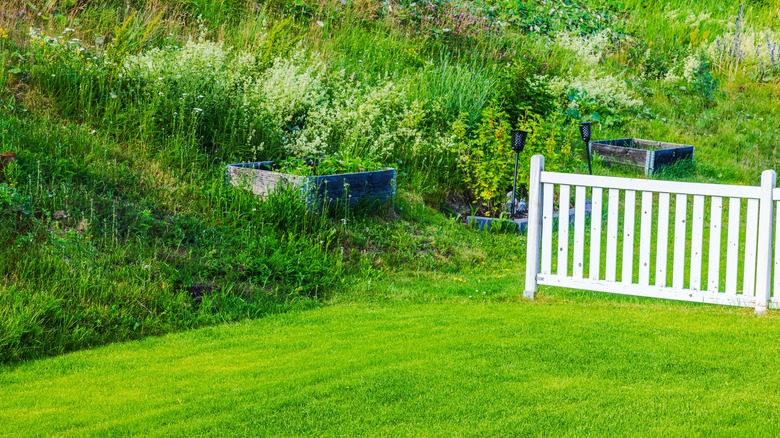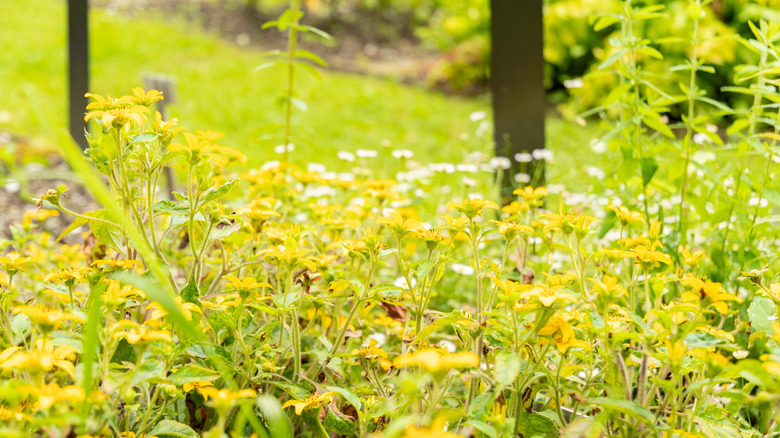The Yellow Flowering Ground Cover That's Perfect For Your Sloped Yard
A sloped yard can be a joy or an ordeal. It can put you eye-level with the treetops and serve as your personal sledding hill in the winter. The right kind of slope directs water away from your home's foundation or makes it possible to have a daylight basement. But sloped yards are prone to erosion, inhospitable to traditional gardening, and difficult to mow. Ground covers solve many of the problems presented by a slope in your yard. Green and Gold (Chrysogonum virginianum) is a virtually maintenance-free ground cover perfect for slopes that's aptly named for its yellow blossoms and green foliage. Small, star-shaped flowers bloom profusely in the spring, transforming your sloped yard into a golden carpet. After the flowers are spent at the end of June, the low-growing leaves remain green, only dying back after a hard freeze, and growing back in late winter or early spring.
Green and Gold, sometimes called Goldstar or Goldenstar, is hardy in USDA zones 5 through 9. This herbaceous perennial forms 18-inch-wide ground-hugging mats with 1- to 3-inch wide flowers growing on stems that rise up to 10 inches above the foliage. A generally worry-free plant, Green and Gold prefers moderately moist, well-drained, acidic soil in dappled shade, but it can tolerate heavy shade or full sun (only if the soil is consistently moist). The plant is generally pest- and disease-free, though slugs may eat young foliage, and the plants may suffer from root rot if they're overwatered. Try a natural slug trap if you discover the slimy creatures in your yard. Green and Gold grows at a moderate to rapid rate, but it may take a couple of years for it to completely establish itself as a ground cover.
Growing Green and Gold in your sloped yard
Ground covers are expected to thrive in the same spot for years, so soil preparation before planting is key to the establishment of healthy root systems. Till the earth to a depth of 8 to 10 inches, and then work in a 2-inch layer of organic material, like compost or manure. This not only nourishes the soil, but it aids in moisture retention. Have the soil tested to determine which fertilizer you should use. You can buy a home test kit, send a sample to your local extension service, or make a DIY test to check the health of your soil. Mix the appropriate fertilizer into enriched soil to a depth of 6 to 8 inches. Green and Gold can be sown from seed, stem cuttings, or division.
Since Green and Gold is native to woodland areas from Pennsylvania south to Florida and west to Louisiana, it fits intrinsically into a naturalized landscape. Ground covers, flowers, trees, and shrubs complement each other in a naturalized landscape, replacing a structured, traditional yard, and providing habitat for pollinators like butterflies and songbirds. Consider extending your use of Gold and Green on sloped areas of the yard to a shade garden or under trees. It's a dependable ground cover for a drought-tolerant rock garden. The plant is resistant to deer and has a low flammability rating, making it an excellent choice in areas where forest fires are a danger.

